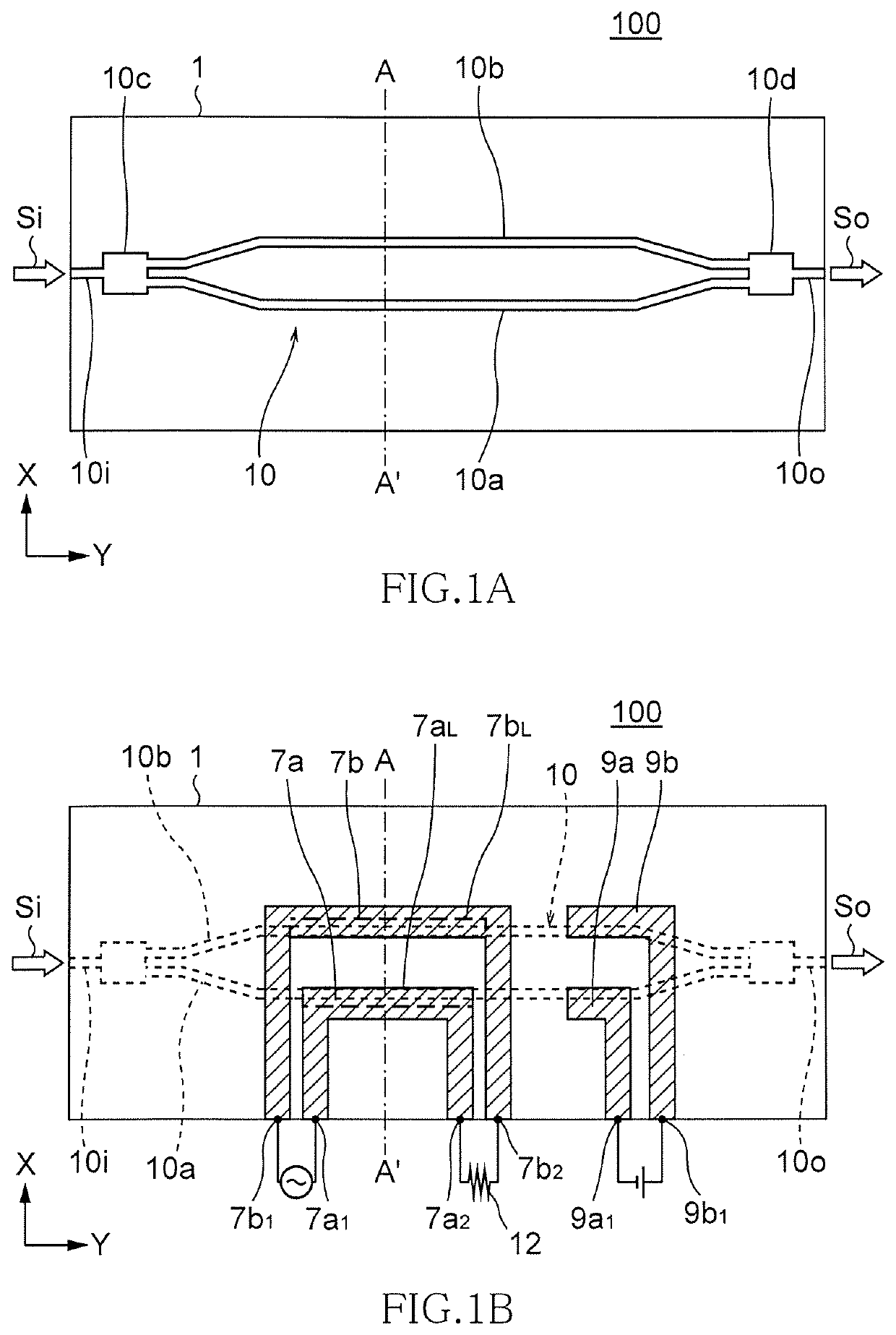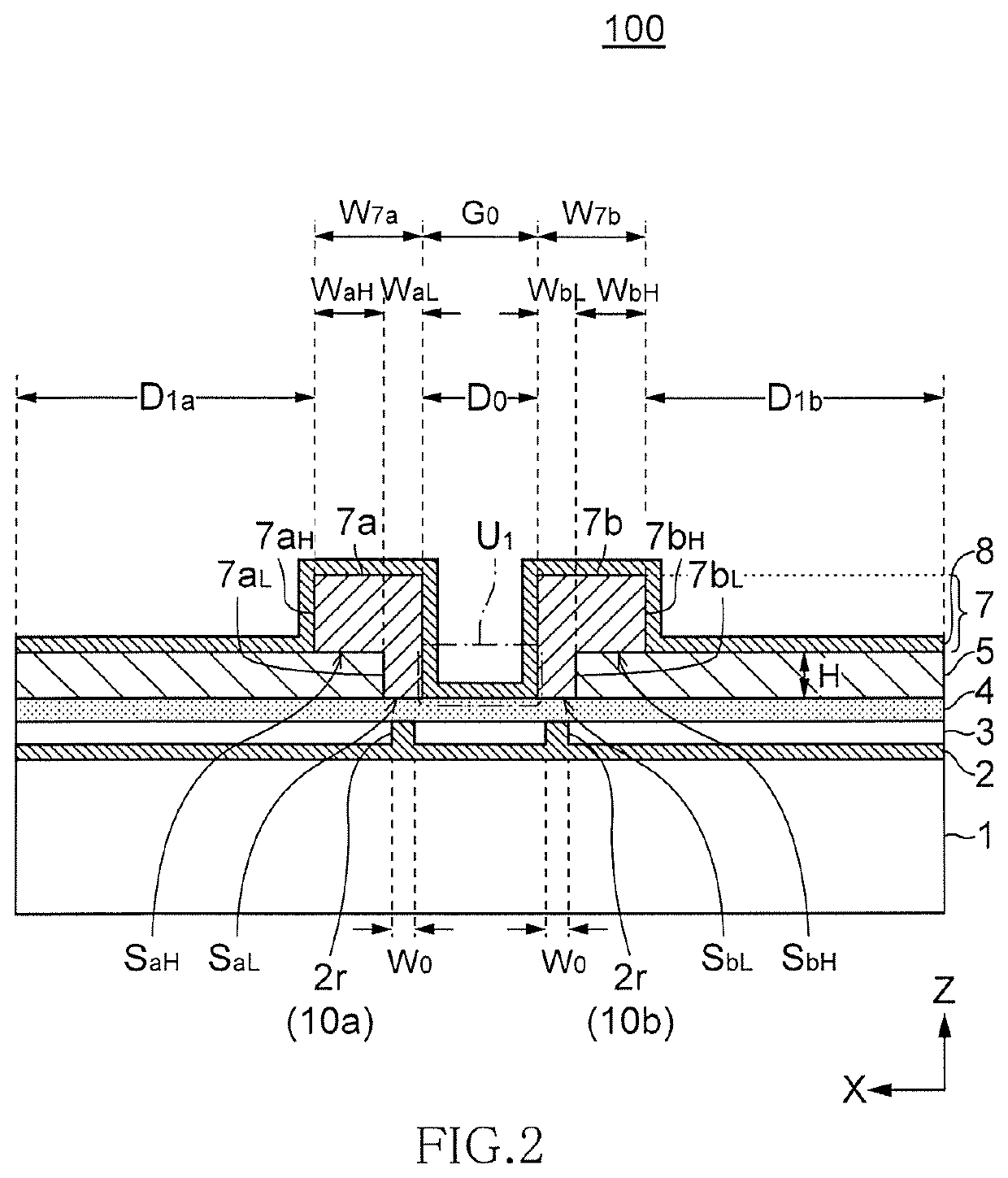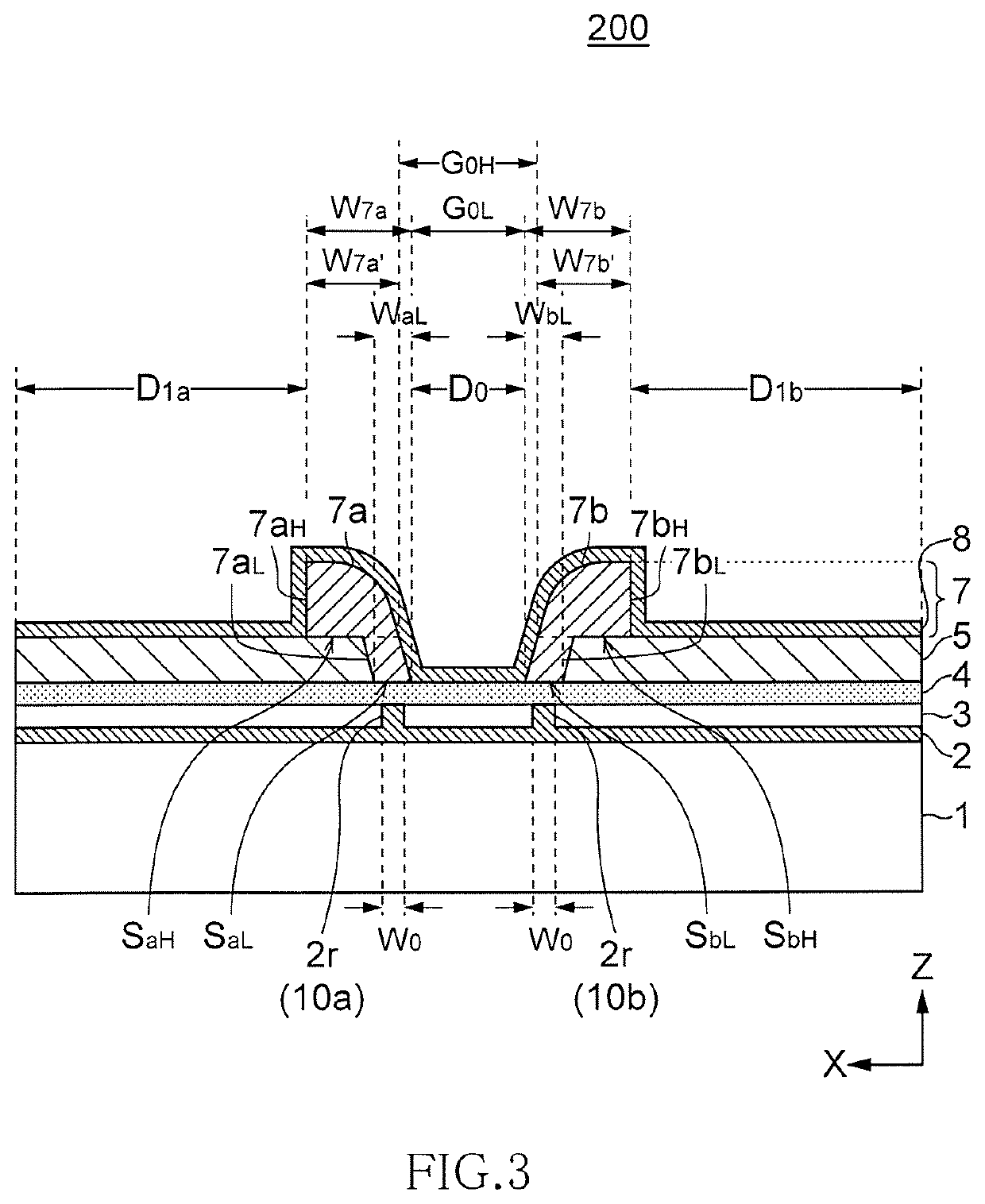Optical modulator
a modulator and optical technology, applied in the field of optical modulators, can solve the problems of preventing operation at high frequencies, limiting the high-speed modulation field, and a large length of the entire length of the modulator, so as to reduce the eo characteristics of ripple or crosstalk, reduce radiation loss and wavelength chirp, and improve the effect of high-frequency characteristics
- Summary
- Abstract
- Description
- Claims
- Application Information
AI Technical Summary
Benefits of technology
Problems solved by technology
Method used
Image
Examples
examples
[0130]Electric field efficiency of an optical modulator having a cross-sectional structure illustrated in FIG. 2 was evaluated by simulation. In this optical modulator, the substrate 1 was a sapphire single crystal substrate (specific dielectric constant: 10), the waveguide layer 2 was formed of a lithium niobate film, the protective layer 3 was formed of SiO2 (specific dielectric constant: 4), the buffer layer was formed of an oxide La-AL-O (specific dielectric constant: 13) composed of La, Al and the like, the insulating layer 5 was formed of an oxide (specific dielectric constant: 8), the electrode layer 7 was made of Au, and the dielectric layer 8 was formed of polyimide. The thickness of the waveguide layer 2 was 1.5 μm, the slab thickness of the waveguide layer 2 was 0.4 μm (the thickness of the ridge part 2r was 1.1 μm), the ridge width W0 of the waveguide layer 2 was 1.2 μm, the thickness of the buffer layer was 0.9 μm, the gap between the first and second waveguides was 18 ...
PUM
| Property | Measurement | Unit |
|---|---|---|
| length | aaaaa | aaaaa |
| ridge width W0 | aaaaa | aaaaa |
| thickness | aaaaa | aaaaa |
Abstract
Description
Claims
Application Information
 Login to View More
Login to View More - R&D
- Intellectual Property
- Life Sciences
- Materials
- Tech Scout
- Unparalleled Data Quality
- Higher Quality Content
- 60% Fewer Hallucinations
Browse by: Latest US Patents, China's latest patents, Technical Efficacy Thesaurus, Application Domain, Technology Topic, Popular Technical Reports.
© 2025 PatSnap. All rights reserved.Legal|Privacy policy|Modern Slavery Act Transparency Statement|Sitemap|About US| Contact US: help@patsnap.com



